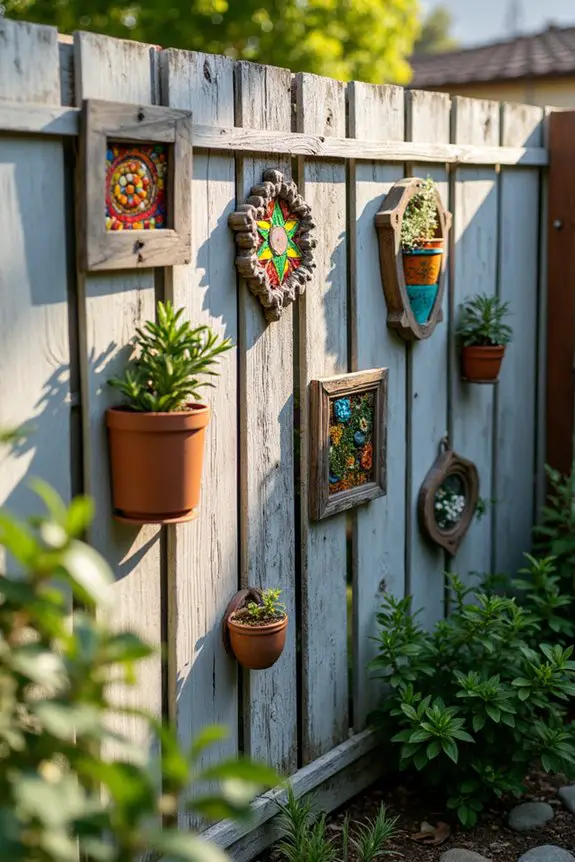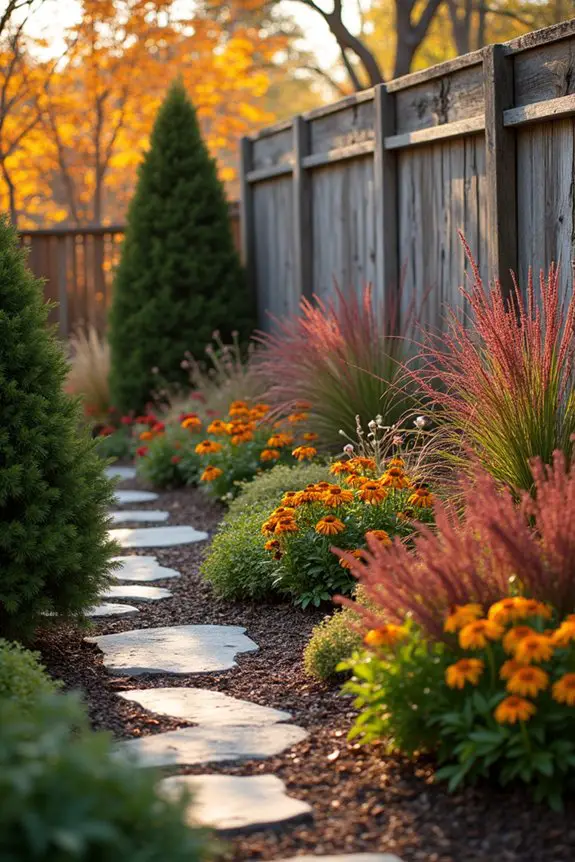15 Native Garden Plants That Solve Common Yard Problems
We often face the same frustrating challenges: stubborn clay soil that refuses to drain, steep slopes that wash away with every storm, and shady corners where nothing seems to thrive.
Native plants offer elegant solutions to these common yard dilemmas, transforming problem areas into stunning focal points.
These resilient beauties work harder than traditional garden favorites, solving practical issues while creating breathtaking displays of color and texture that change dramatically with each passing season.
Quick Summary
- Wild Bergamot and Wild Lupine improve soil quality by breaking up clay and naturally enriching depleted earth with nitrogen fixation.
- Virginia Creeper and Wild Strawberry prevent erosion through dense root systems that anchor loose soil on slopes and hillsides.
- Coral Honeysuckle creates natural privacy screens on fences while attracting hummingbirds with vibrant coral-red flowers and dense growth.
- Wild Ginger thrives in deep shade areas, forming thick mats that block weeds and require zero maintenance once established.
- Blue Flag Iris and Cardinal Flower solve waterlogged soil problems by thriving in boggy conditions while providing beautiful blooms.
Wild Bergamot for Clay Soil Breakthrough
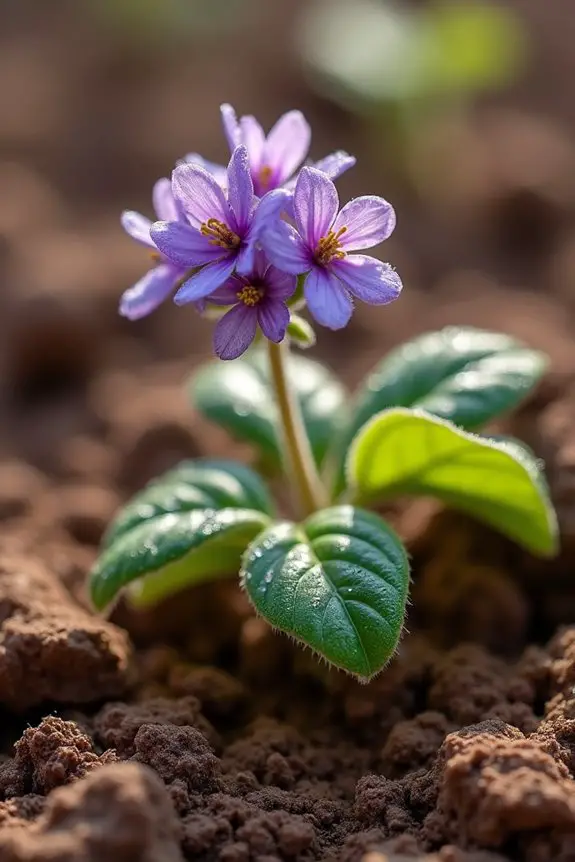
Triumph awaits gardeners who struggle with stubborn clay soil, as wild bergamot emerges as nature’s perfect solution for transforming dense, waterlogged earth into thriving garden space.
This remarkable native perennial sends deep taproots through compacted layers, naturally breaking up hardpan while creating channels for precious water and air circulation.
Wild bergamot benefits extend beyond soil improvement, offering lavender-pink blooms that dance gracefully above aromatic foliage throughout summer months.
Unlike costly clay soil amendments that require annual replacement, this hardy wildflower establishes permanent root systems that continuously work to loosen stubborn earth while attracting beneficial pollinators to flourishing garden beds.
Virginia Creeper for Erosion Control on Slopes
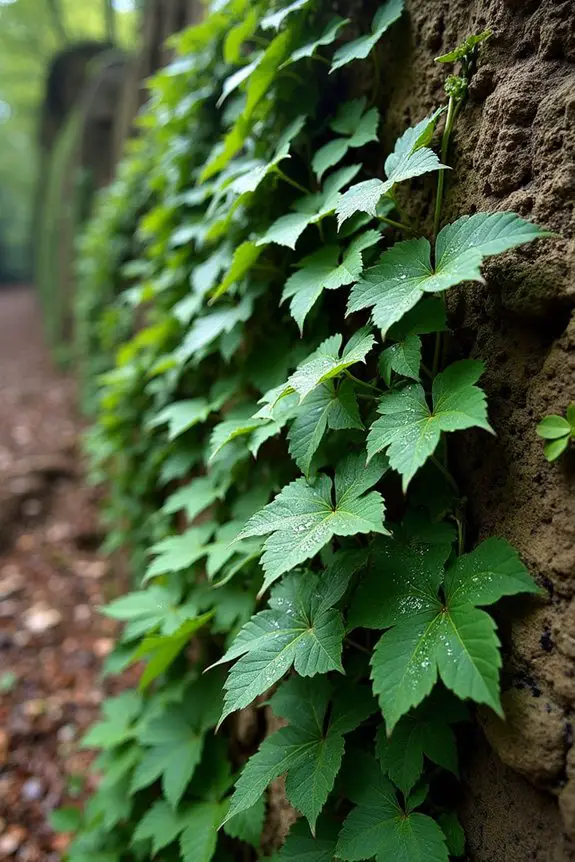
Virginia creeper’s slope stabilization enchantment includes:
- Dense foliage that softens rainfall impact
- Strong root networks that anchor loose soil
- Fast-spreading coverage that prevents washouts
- Beautiful fall colors from green to brilliant crimson
This erosion prevention champion turns problematic slopes into stunning landscape features.
Coral Honeysuckle for Vertical Privacy Solutions
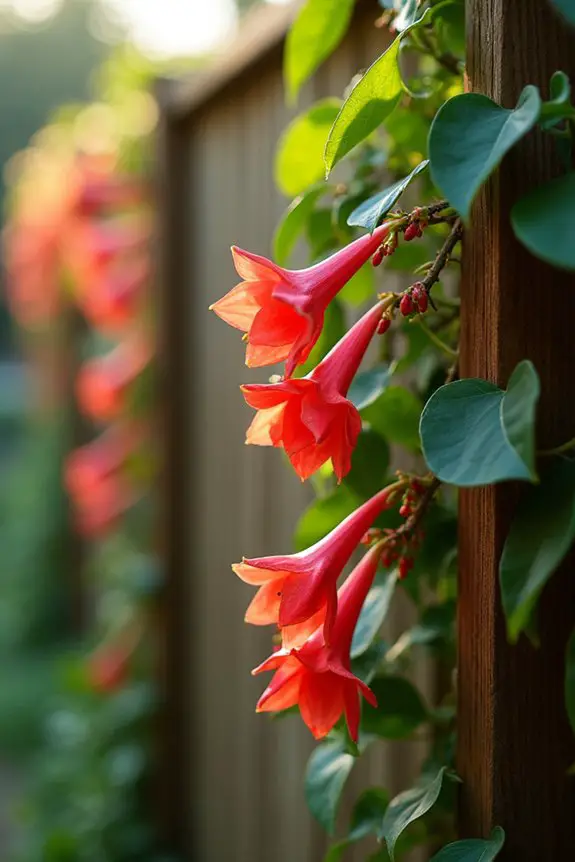
When homeowners seek elegant privacy screens that bloom with natural beauty, coral honeysuckle emerges as the perfect climbing companion for fences, trellises, and arbors.
This native treasure transforms ordinary boundaries into stunning vertical garden masterpieces, creating natural privacy screening that dazzles throughout growing seasons. Vibrant coral-red tubular flowers dance against deep green foliage, attracting hummingbirds and butterflies while blocking unwanted views.
Unlike invasive honeysuckle varieties, this well-behaved climber respects garden boundaries while reaching impressive heights. Its dense growth pattern forms living walls that provide year-round structure, making it an ideal choice for creating intimate outdoor spaces filled with color and wildlife activity.
Wild Ginger for Dense Shade Coverage
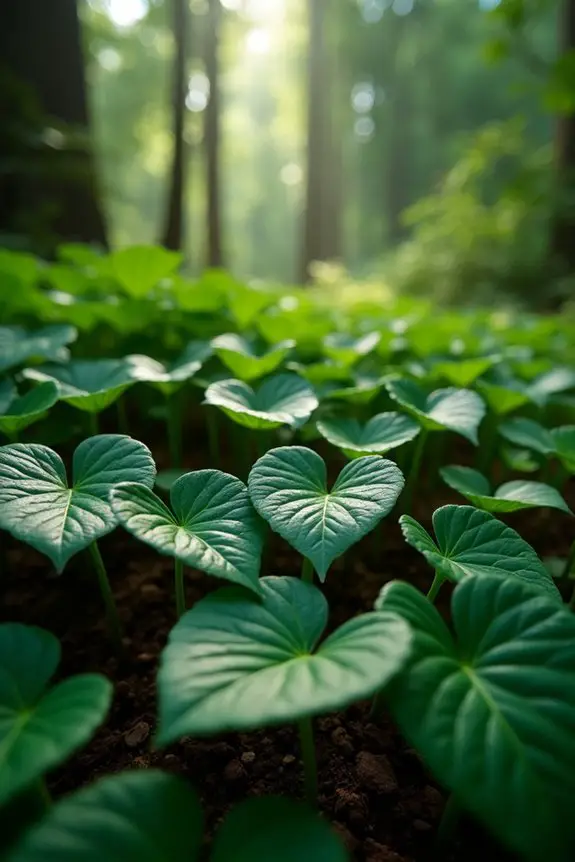
While coral honeysuckle conquers vertical challenges with climbing grace, ground-level shade problems require equally impressive solutions that carpet forest floors with lush greenery.
Wild ginger transforms forgotten shaded corners into enchanting woodland retreats with its heart-shaped emerald leaves and remarkable shade tolerance. This native ground cover spreads gently through underground rhizomes, creating dense carpets that suppress weeds naturally.
Wild ginger’s exceptional qualities include:
- Thrives in deep shade where grass fails completely
- Forms thick, weed-blocking mats within two growing seasons
- Produces hidden burgundy flowers that smell like root beer
- Requires zero maintenance once established in moist soil
Blue Flag Iris for Wet Area Management
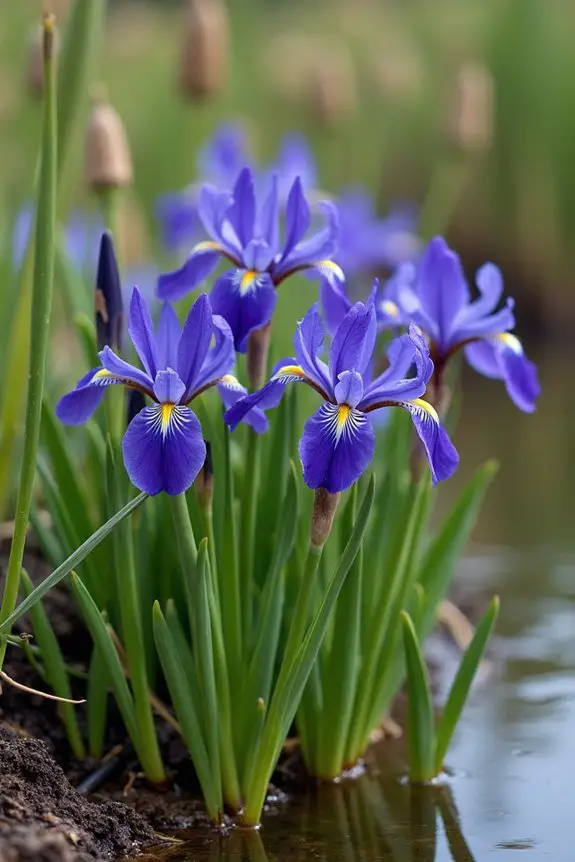
Beyond shaded sanctuaries, soggy soil areas present their own unique landscaping challenges that demand specialized native solutions.
Blue flag iris transforms waterlogged zones into stunning seasonal displays with sword-like emerald foliage and spectacular violet-blue blooms. These resilient perennials thrive where other plants struggle, creating natural drainage systems through their robust root networks.
Blue flag iris benefits include exceptional moisture tolerance, deer resistance, and breathtaking spring flowers that attract butterflies and hummingbirds.
Blue flag iris care remains remarkably simple, requiring minimal maintenance once established in consistently moist conditions, making wet areas become garden jewels rather than problematic spaces.
Little Bluestem for Sandy Soil Stabilization
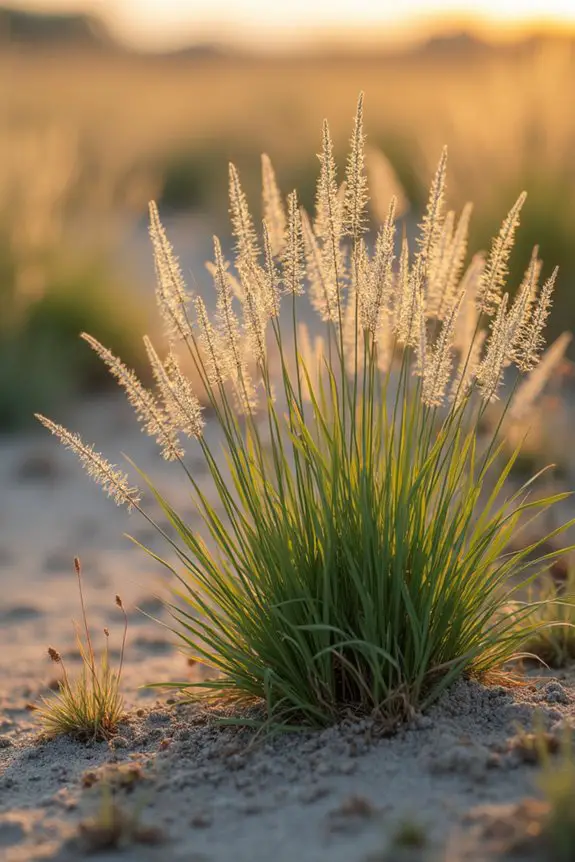
Countless homeowners struggle with loose, sandy soils that shift with every breeze and refuse to support traditional lawn grasses.
Little bluestem transforms these challenging spaces into stunning prairie landscapes with cascading silver-blue stems that dance gracefully in autumn winds. This remarkable native grass develops deep, fibrous roots that anchor sandy soil while dramatically improving soil health through organic matter accumulation.
Little bluestem’s exceptional drought resistance makes it perfect for xeriscape gardens, requiring minimal water once established:
- Dense root systems prevent erosion on slopes
- Copper-bronze fall colors create breathtaking seasonal displays
- Seeds provide winter food for songbirds
- Low maintenance requirements save time and money
Summersweet for Poorly Drained Spaces
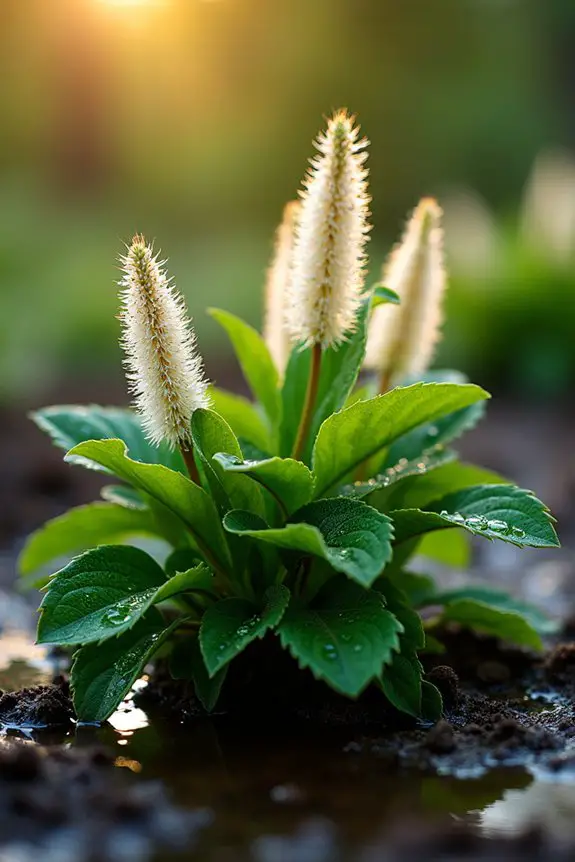
Soggy corners and perpetually damp areas become fragrant sanctuaries when transformed with summersweet’s delicate white flower spikes that perfume entire gardens throughout July and August.
This adaptable native shrub thrives where other plants struggle, sending roots deep into waterlogged soil while creating breathtaking displays above ground.
Summersweet benefits include attracting butterflies and hummingbirds to previously problematic spaces, turning drainage nightmares into pollinator havens.
Planting summersweet requires minimal effort, as this hardy performer tolerates both wet conditions and partial shade.
Dense clusters of honey-scented blooms create living walls of fragrance that transform forgotten corners into garden showstoppers.
Wild Columbine for Rocky Garden Challenges
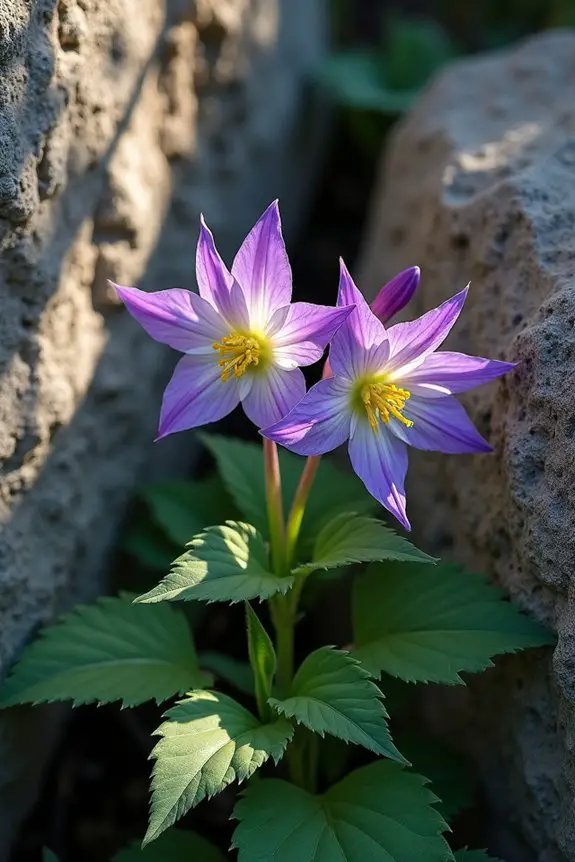
While waterlogged soil challenges find solutions in fragrant summersweet, rocky terrain and thin soil present entirely different obstacles that demand equally elegant native solutions.
Wild columbine gracefully transforms challenging rocky spaces into enchanting woodland gardens with delicate, spurred blooms dancing above feathery foliage.
This charming native thrives where other plants struggle, offering:
- Vibrant blue and white flowers that bloom from late spring through early summer
- Exceptional drought tolerance once established in poor, rocky soil
- Natural pollinator attraction drawing hummingbirds and butterflies to difficult areas
- Self-seeding habit creating effortless naturalized colonies over time
Like other drought tolerant plants such as sedums and agave, wild columbine requires minimal water once established, making it an ideal choice for water-conscious gardeners facing challenging growing conditions.
For gardeners seeking additional shade-loving plants to complement their rocky terrain plantings, options like coral bells and barrenwort offer similar resilience in difficult growing conditions.
Rocky terrain becomes a stunning display of graceful beauty.
Spicebush for Deep Shade Problem Areas
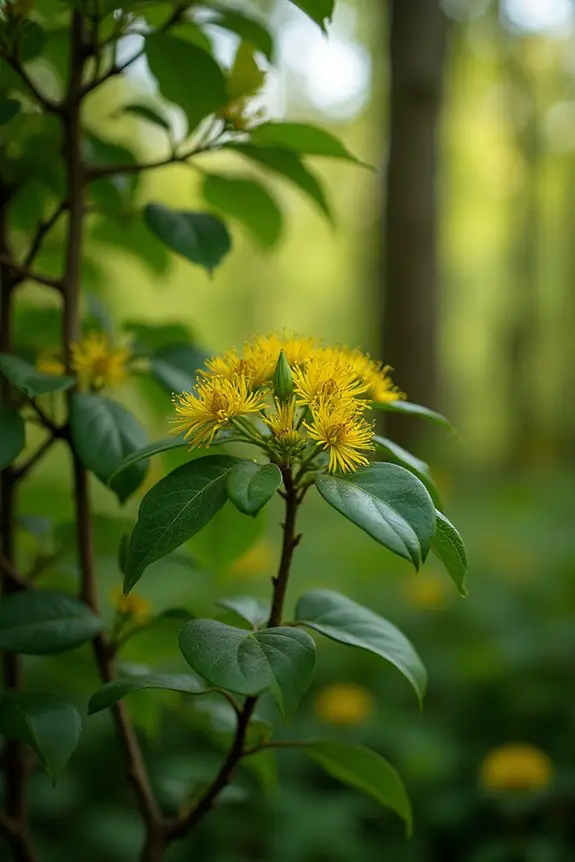
Many gardeners surrender to the seemingly impossible darkness beneath mature trees, yet spicebush transforms these forgotten corners into aromatic sanctuaries bursting with golden autumn wonder.
This native shrub thrives where others fail, creating lush green walls that glow like emeralds in filtered sunlight.
Spicebush benefits include fragrant leaves that release lemony scents when brushed, plus brilliant yellow fall foliage that illuminates shadowy spaces.
The spicebush wildlife connection runs deep, as caterpillars feast on leaves while birds devour bright red berries.
Dense clusters create natural privacy screens, turning problematic shade into peaceful woodland retreats filled with seasonal enchantment.
Switchgrass for Windy Exposed Sites
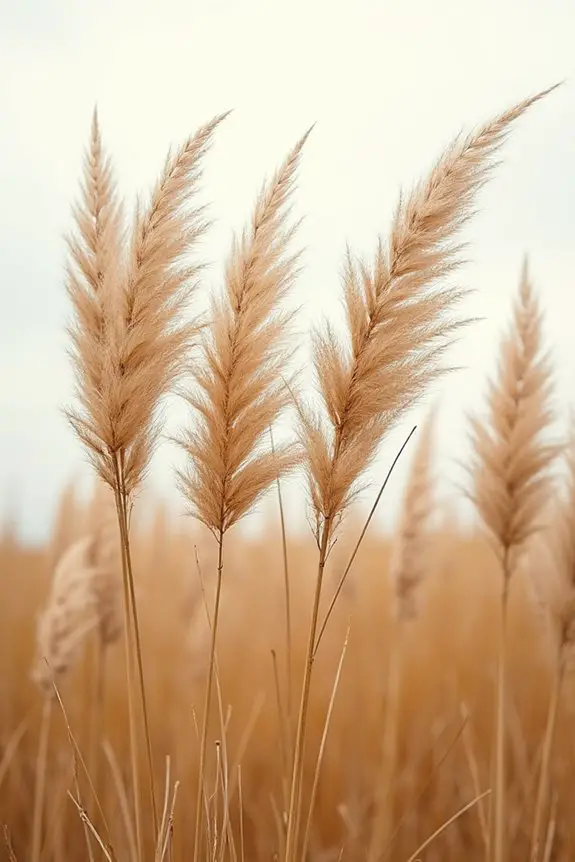
Countless homeowners face the relentless challenge of windswept slopes and exposed hillsides where delicate plants simply cannot survive the constant battering.
Switchgrass emerges as nature’s golden solution, transforming these troublesome areas into flowing meadows of amber beauty. This resilient prairie native creates stunning windbreak effectiveness while maintaining exceptional ornamental value throughout every season.
Switchgrass offers remarkable benefits for exposed locations:
- Wind resistance – Deep roots anchor firmly against fierce gusts
- Seasonal interest – Green summer blades turn golden bronze in fall
- Low maintenance – Thrives without fertilizers or frequent watering
- Wildlife habitat – Seeds feed birds while providing nesting cover
Cardinal Flower for Boggy Low Spots

From windswept heights to waterlogged valleys, nature provides perfect solutions for every challenging corner of the landscape.
Cardinal flower transforms soggy problem areas into brilliant scarlet showcases that captivate both gardeners and wildlife alike. These stunning native perennials thrive in consistently moist soil where other plants struggle, producing towering spikes of intense red blooms from midsummer through early fall.
The cardinal flower attraction draws hummingbirds like magnets, creating enchanting moments of ruby-throated visitors hovering among crimson petals.
Beyond beauty, these remarkable plants deliver exceptional native pollinator benefits, supporting butterflies and beneficial insects while turning waterlogged nightmares into dreamy wetland gardens.
Wild Strawberry for Ground Cover Needs

A living carpet of emerald green spreads effortlessly across challenging terrain where traditional lawns fail to flourish.
Wild strawberry transforms bare slopes, shaded corners, and rocky patches into productive wildlife habitat that serves both beauty and function. This remarkable native groundcover produces delicate white flowers followed by tiny, sweet berries perfect for edible landscaping adventures.
Wild strawberry excels in four key areas:
- Dense coverage that crowds out weeds naturally
- Erosion control on slopes and hillsides
- Low maintenance requirements once established
- Year-round interest with seasonal flowers and fruit
Birds, butterflies, and small mammals treasure this generous groundcover’s abundant offerings.
New England Aster for Late Season Color
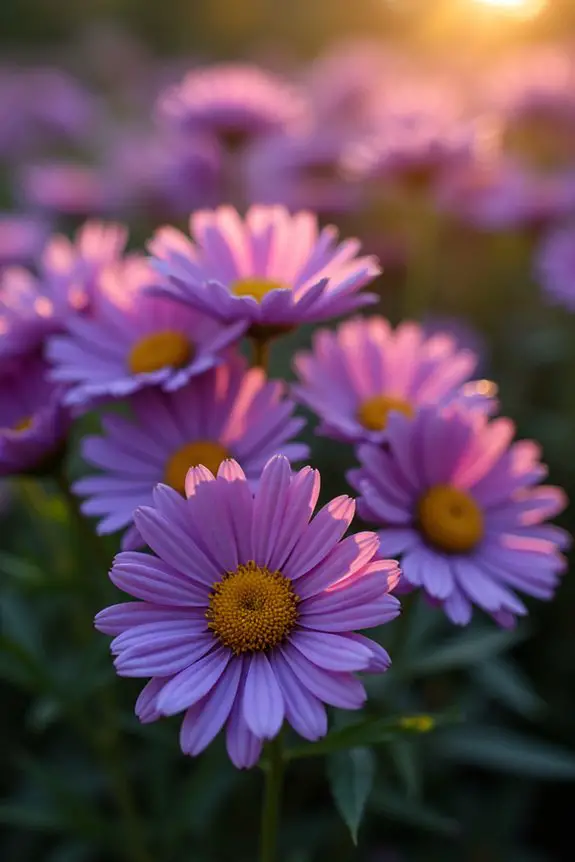
While ground-hugging strawberries create foundation beauty throughout spring and summer, towering purple clouds of New England aster steal the spotlight when autumn arrives with blazing glory.
These magnificent perennials transform dreary September gardens into breathtaking purple panoramas, reaching four to six feet tall with countless daisy-like blooms.
Their royal violet petals create stunning vibrant garden accents against golden fall foliage, while bright yellow centers beckon monarchs, bees, and butterflies during their final seasonal journey.
This native wonder provides essential fall pollinator attraction when most flowers fade, ensuring gardens remain alive with fluttering wings and gentle buzzing throughout October’s crisp, colorful days.
Serviceberry for Multi-Season Interest
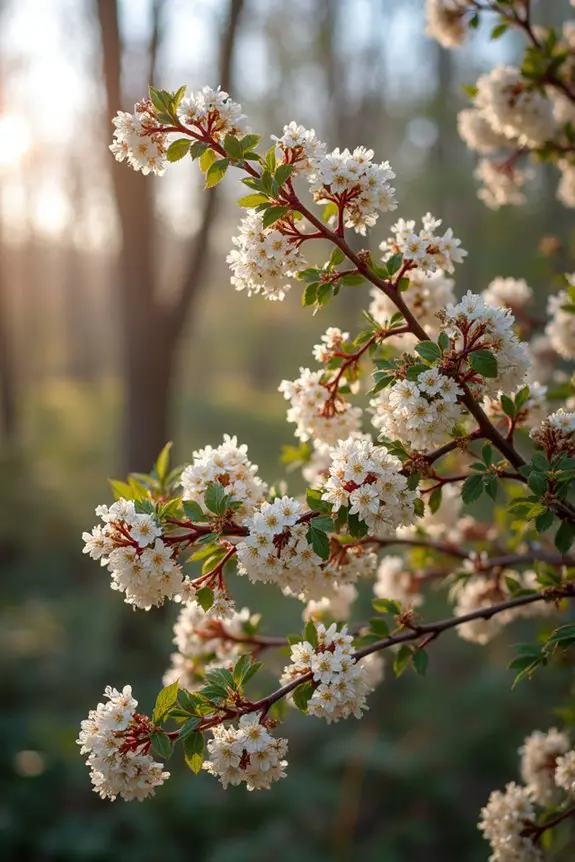
Throughout every season, serviceberry transforms ordinary landscapes into enchanting displays of ever-changing natural beauty.
This remarkable native shrub delivers stunning white spring blossoms, followed by delicious purple berries that attract songbirds throughout summer.
Autumn brings breathtaking golden-orange foliage that glows like warm firelight.
Four seasonal highlights make serviceberry irresistible:
- Spring: Delicate white flower clusters create stunning focal points
- Summer: Sweet berries provide food for wildlife and humans
- Fall: Brilliant orange-red leaves rival any maple tree
- Winter: Graceful branching structure adds sculptural elegance
Most serviceberry varieties thrive with minimal serviceberry maintenance, making them perfect problem-solvers for busy gardeners seeking maximum visual impact.
Wild Lupine for Nitrogen-Poor Soils
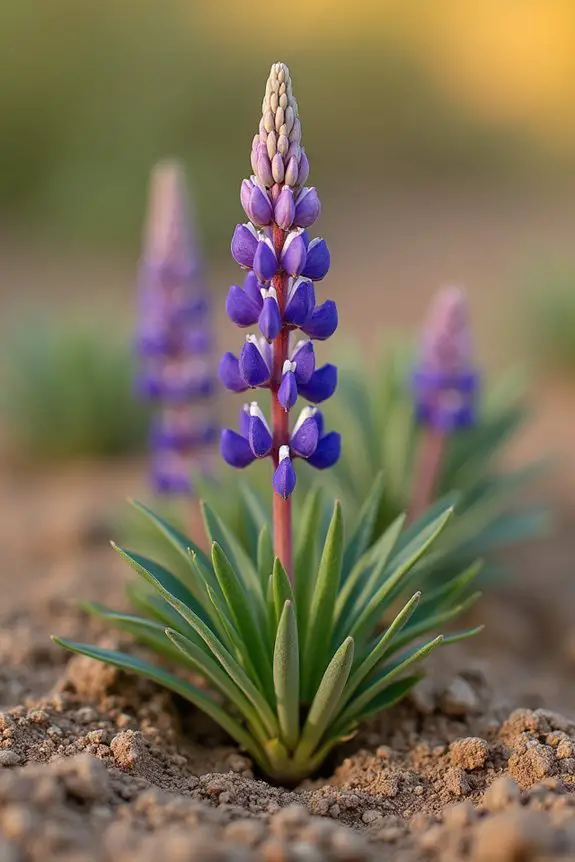
Where serviceberry excels in visual drama, wild lupine conquers challenging terrain that defeats most garden favorites.
These remarkable perennials transform barren, sandy patches into breathtaking purple meadows through natural nitrogen fixation, enriching depleted soil while thriving where others fail.
Towering spikes of deep violet blooms create stunning vertical columns, attracting beneficial pollinators throughout late spring and early summer.
The wildflower benefits extend beyond beauty, as lupine’s unique ability to restore soil nutrients makes neighboring plants flourish.
Silver-green palmate leaves provide textural contrast, while the plant’s hardy nature ensures years of effortless color in previously impossible growing conditions.
Popular Questions
How Long Does It Take for Native Plants to Establish in Problem Areas?
Gardeners experience nature’s patience as plants undergo their settling-in period. Establishment timeline varies significantly, with most species requiring one to three growing seasons. Plant growth accelerates after initial root development, creating resilient landscapes worth the investment.
Can These Native Plants Attract Unwanted Wildlife or Pests to My Yard?
Native plants typically provide wildlife benefits by attracting beneficial species like birds and pollinators while serving as natural pest deterrents. They rarely draw problematic animals, instead creating balanced ecosystems that discourage harmful pests through natural predator-prey relationships.
What’s the Best Time of Year to Plant Native Species for Yard Problems?
Planting seasons vary by region and species type. Spring and fall typically offer optimal conditions with moderate temperatures and adequate moisture. Seasonal considerations include avoiding extreme weather, ensuring establishment before dormancy, and matching planting timing to local climate patterns.
Do Native Plants Require Special Fertilizers or Soil Amendments When First Planted?
Most gardeners assume newly planted species demand intensive feeding, but here’s the surprising truth: native plants typically thrive without special fertilizer types, provided basic soil quality meets drainage requirements and minimal organic matter incorporation during initial establishment.
How Much Maintenance Do Established Native Plants Need Compared to Traditional Landscaping?
Established native plants require significantly less maintenance than traditional landscaping, needing minimal watering, fertilizing, or pest control. The maintenance differences become apparent after establishment, with long term benefits including reduced upkeep costs and time investment.


